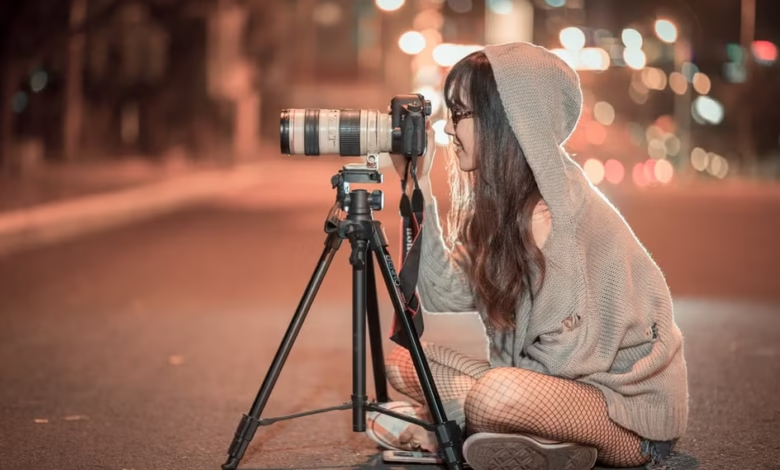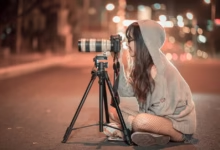Photeeq Bokeh: Understanding the Magic Behind Beautiful Blurry Backgrounds

If you’ve ever marveled at stunning photos where the subject is sharp and clear, but the background appears beautifully blurred and soft, you’ve likely encountered Photeeq Bokeh. This unique photographic effect has become a hallmark of many professional and amateur photographers alike. But what is Photeeq Bokeh, and why is it so highly sought after in the world of photography?
In this article, we’ll dive deep into the fascinating world of Photeeq Bokeh, explaining what it is, how it works, and how you can use it to enhance your photography skills. Whether you’re a beginner looking to improve your photos or an experienced photographer seeking to refine your techniques, this guide will give you the knowledge you need to create stunning bokeh effects.
What is Photeeq Bokeh?
Photeeq Bokeh refers to the visually pleasing blur or out-of-focus areas in a photograph, specifically in the background, that make the subject stand out. The word “bokeh” comes from the Japanese word “boke,” which means “blur” or “haze.” It’s not just any blur, though; Photeeq Bokeh is carefully controlled and used as a creative tool to emphasize the subject and add an artistic touch to the image.
Unlike ordinary background blur, Photeeq Bokeh focuses on the shape and quality of the blur, which can dramatically enhance a photo’s aesthetic appeal. The bokeh effect can vary depending on the lens, aperture settings, and lighting, giving photographers endless possibilities to create beautiful and unique images.
The Science Behind Photeeq Bokeh
To truly understand Photeeq Bokeh, it’s important to grasp the science behind it. Bokeh is primarily influenced by the way light interacts with the camera lens, especially when using wide apertures. Here’s how it works:
- Aperture Shape: The aperture, or opening in the lens, determines how much light enters the camera. A wide aperture (low f-number, like f/1.8) allows more light in and creates a shallow depth of field, which means the background gets blurred.
- Lens Elements: Different lenses have different characteristics, and some lenses produce smoother, more aesthetically pleasing bokeh than others. The arrangement and shape of the lens’s aperture blades influence the shape and quality of the bokeh circles.
- Depth of Field: Depth of field refers to the area in a photo that appears sharp and in focus. When using a shallow depth of field, only the subject remains in focus, while the background is beautifully blurred, creating bokeh.
The key to achieving Photeeq Bokeh is to control these factors to create an image where the subject stands out clearly against a dreamy, blurred backdrop. This effect is often seen in portraits, macro photography, and close-up shots.
The Importance of Lenses in Achieving Photeeq Bokeh
Not all lenses are created equal when it comes to Photeeq Bokeh. To get the best results, you’ll need to choose the right lens and understand how it affects the bokeh in your photos. Here are some important lens considerations:
- Prime Lenses: Prime lenses, such as the 50mm f/1.8 or 85mm f/1.4, are popular for creating Photeeq Bokeh because they have wide maximum apertures, which allow for shallow depth of field and beautiful background blur. These lenses are ideal for portraits or situations where you want to isolate your subject.
- Zoom Lenses: While zoom lenses can also produce bokeh, they may not achieve the same quality of blur as prime lenses. However, zoom lenses with a wide aperture (like f/2.8) can still produce nice bokeh in the right conditions.
- Aperture Blades: The more aperture blades a lens has, the smoother and more rounded the bokeh will appear. Lenses with 9 or more aperture blades often create circular bokeh, which many photographers find visually pleasing.
Choosing the right lens for Photeeq Bokeh is essential for getting the desired effect. Pay attention to the lens’s aperture, focal length, and aperture blade design to achieve the best results.
How to Create Stunning Photeeq Bokeh in Your Photos
Now that we understand the science and equipment behind Photeeq Bokeh, let’s explore how you can create this beautiful effect in your own photography. Whether you’re taking portraits or photographing nature, these tips will help you master the art of bokeh:
Use a Wide Aperture
- To achieve Photeeq Bokeh, start by selecting a wide aperture (a low f-number, like f/1.8 or f/2.8). A wide aperture creates a shallow depth of field, allowing the background to blur out while keeping your subject in focus.
- Be mindful of your distance from the subject and background. The closer you are to the subject, the more pronounced the bokeh will be.
Focus on Your Subject
- For the best Photeeq Bokeh, make sure your subject is sharply in focus. This will make the blurred background more striking and allow the bokeh to appear as a complementary element in the image.
- Adjust the focus manually or use single-point autofocus to ensure that the subject remains crisp and clear.
Play with Background Light
- Photeeq Bokeh shines when you have light sources in the background. Street lights, sunlight, or even a simple lamp can create stunning bokeh circles. Experiment with different light sources to create unique and appealing effects.
- Look for scenes with colorful lights or patterns that can be turned into beautiful bokeh. The more contrast and variation in the background, the more visually interesting the bokeh will be.
Experiment with Lens Choice
- As mentioned earlier, using a prime lens with a wide aperture is one of the best ways to create Photeeq Bokeh. However, don’t be afraid to experiment with different lenses to see how each one creates a different bokeh effect.
- Try using a lens with a higher focal length (e.g., 85mm or 135mm) to create more pronounced bokeh and isolate your subject even further.
Common Mistakes to Avoid in Photeeq Bokeh Photography
While creating Photeeq Bokeh can be a fun and rewarding process, there are some common mistakes that photographers often make. Here are a few to watch out for:
Not Controlling the Depth of Field
- If you don’t manage the depth of field properly, the background may end up being too distracting, rather than beautifully blurred. Make sure you select an appropriate aperture and focus on your subject to avoid overly busy backgrounds.
Getting Too Close to the Background
- If you position your subject too close to the background, the bokeh effect will be reduced. To get those stunning, dreamy background blurs, make sure there is enough distance between your subject and the background.
Ignoring the Quality of Bokeh
- Not all bokeh is created equal. Some lenses create harsh or distracting bokeh, while others produce soft, circular, and aesthetically pleasing blur. Be sure to test different lenses to find the one that creates the type of bokeh you prefer.
Overdoing the Bokeh
- While Photeeq Bokeh can enhance a photo, too much blur can sometimes detract from the subject. It’s important to strike a balance where the bokeh adds to the image without overwhelming it.
How to Enhance Photeeq Bokeh with Post-Processing
In some cases, photographers may want to enhance the bokeh effect in post-processing. With the right editing tools, you can further smooth out the background blur or even manipulate the bokeh shapes. Here are a few ways to enhance your Photeeq Bokeh in post-processing:
- Blurring Tools: Use software like Adobe Photoshop to apply additional blur to the background. The “Gaussian Blur” filter is particularly useful for adding smoothness to the bokeh effect.
- Bokeh Shaping: Some editing programs offer tools that let you reshape bokeh circles or add creative effects like color gradients or patterns.
- Contrast Adjustments: Enhance the bokeh’s visual appeal by adjusting the contrast or brightness of the background, making the bokeh stand out even more.
By using post-processing techniques, you can refine your bokeh effect and take your photos to the next level.
Applications of Photeeq Bokeh in Different Photography Genres
Photeeq Bokeh isn’t just for portraits—it can be used across various photography genres to create stunning visual effects. Here’s how you can incorporate bokeh into different types of photography:
- Portrait Photography: Bokeh is often used in portraiture to isolate the subject from the background, drawing attention to the face or body while creating a soft, dreamy backdrop.
- Macro Photography: In macro photography, Photeeq Bokeh is used to emphasize small details, like flowers, insects, or everyday objects, making them pop against a blurred background.
- Landscape Photography: While not as common, bokeh can be used creatively in landscapes, especially when photographing things like city lights or natural bokeh effects created by the environment.
Conclusion: Mastering the Art of Photeeq Bokeh
Incorporating Photeeq Bokeh into your photography can transform an ordinary photo into something extraordinary. By understanding the science behind bokeh, choosing the right lens, and experimenting with techniques, you can create beautiful images that captivate your audience.
Whether you’re a seasoned photographer or just starting out, Photeeq Bokeh is a powerful tool that can help you add a creative touch to your work. So, the next time you grab your camera, remember to focus on creating those dreamy, blurred backgrounds that make your subjects shine.
Through practice and experimentation, you’ll soon be able to master Photeeq Bokeh and incorporate it into your photography with ease. Happy shooting!
You may also read:
How to Get on the First Page of Google Search: A Guide by David Aziz
